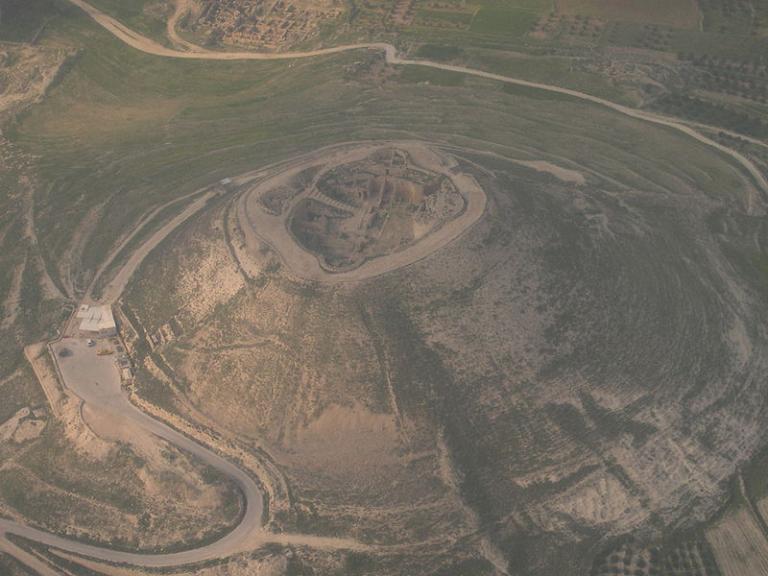
I recently received my copy of Biblical Archaeology Review (March/April 2019) 45/2. In it, on page 6, there’s a fascinating little report by the magazine’s editor, Robert Cargill, entitled “Was Pontius Pilate’s Ring Discovered at Herodium?” I offer a few summary comments on it here below:
On 29 November 2018, a report surfaced from Jerusalem that a simple copper-alloy ring had been found at the Herodium (from the Latin) or Herodion (from the Greek Ἡρώδειον, the Arabic هيروديون, or the Hebrew הרודיון), the mountain fortress three miles southeast of Bethlehem that had been built by King Herod the Great. (Incidentally, the word great here says nothing whatever about Herod’s moral stature, which was many light years removed from good, let alone worthy of admiration.) Actually, the ring had been discovered five decades earlier, during the 1969 excavation season.
Why was it suddenly making the news in late 2018? A thorough cleaning, coupled with advances in photographic technology, had disclosed something very interesting about it: Inscribed on it were the Greek letters ΠΙΛΑΤΟ (PILATO), all written in majuscule or capital form surrounding an image of a krater, a mixing vessel or large vase. The resemblance to the name of Pontius Pilatus or Pontius Pilate, the Roman provincial governor mentioned prominently in the New Testament in connection with the trial and execution of Jesus, is obvious. Presumably, ΠΙΛΑΤΟ represents the dative form of the name, which would ordinarily be written in minuscule letters as Πιλατῳ. Since Pilatus was an extremely unusual name in first-century Judaea, some sort of connection to the biblical Pontius Pilatus seems overwhelmingly probable.
But what is the nature of that connection? Some sensationalizing articles appeared, claiming that the actual ring of Pontius Pilate himself had been found.
However, that seems unlikely. First of all, the ring is a cheap one that doesn’t seem appropriate to a person of Pilate’s rank and status. Secondly, the Greek dative form of the name Pilatus (or “Pilate”), Πιλατῳ, probably means “To Pilate” or “For Pilate.” This seems to suggest that the ring may have been worn by a regional manager or clerk, perhaps a tax collector, who stamped items and documents for the governor or sent goods on to him.
So is the “Pilate ring” of no importance? Hardly.
Until 1961, there was no known archaeological evidence even for the existence of Pontius Pilate, despite his pivotal importance in the New Testament gospel narratives. Things have changed considerably since then.
Related to the material above is an article that I published in the Deseret News on 3 May 2018:
“The ‘Pilate Stone’ in Israel’s Caesarea-by-the-Sea”












